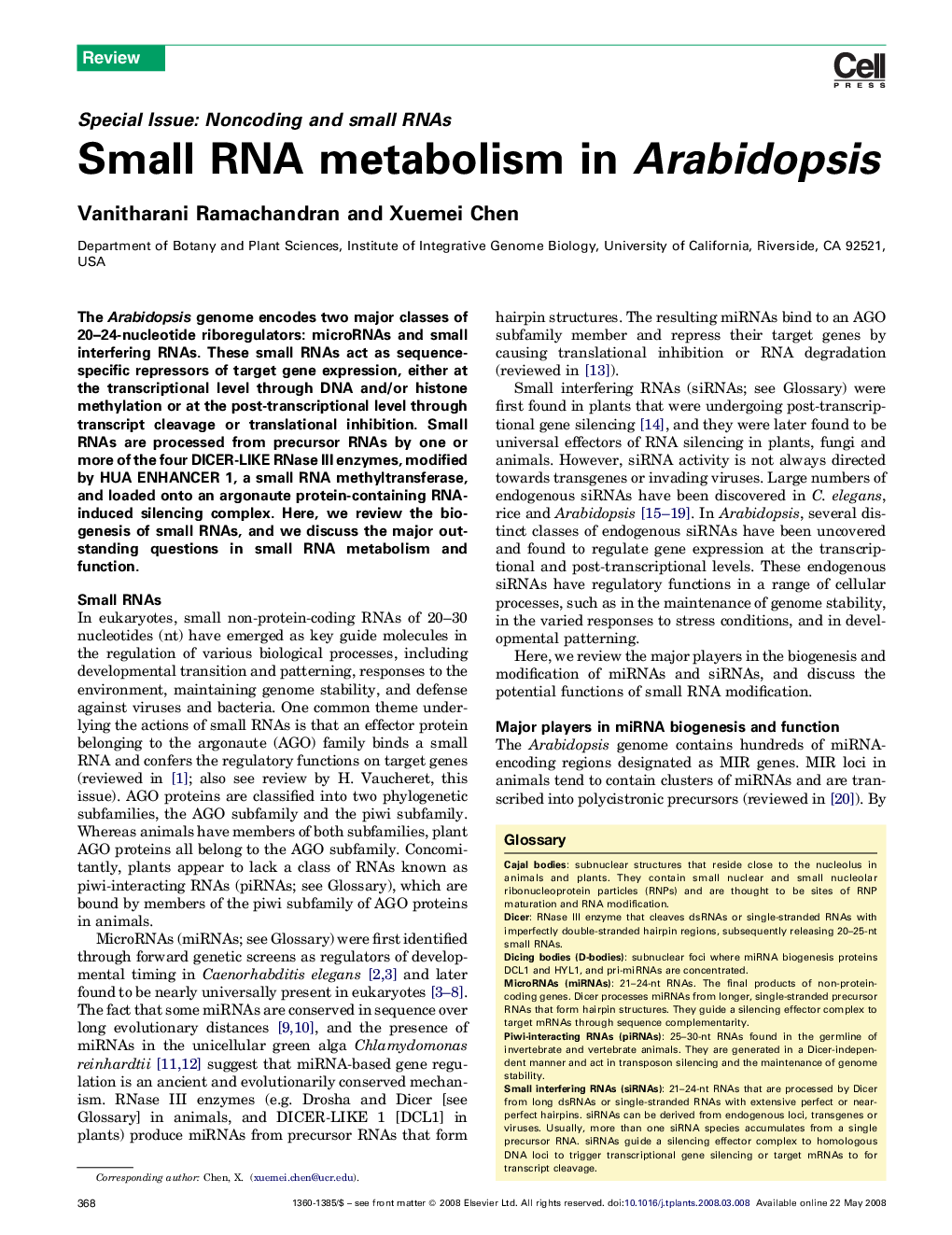| Article ID | Journal | Published Year | Pages | File Type |
|---|---|---|---|---|
| 2826646 | Trends in Plant Science | 2008 | 7 Pages |
Abstract
The Arabidopsis genome encodes two major classes of 20–24-nucleotide riboregulators: microRNAs and small interfering RNAs. These small RNAs act as sequence-specific repressors of target gene expression, either at the transcriptional level through DNA and/or histone methylation or at the post-transcriptional level through transcript cleavage or translational inhibition. Small RNAs are processed from precursor RNAs by one or more of the four DICER-LIKE RNase III enzymes, modified by HUA ENHANCER 1, a small RNA methyltransferase, and loaded onto an argonaute protein-containing RNA-induced silencing complex. Here, we review the biogenesis of small RNAs, and we discuss the major outstanding questions in small RNA metabolism and function.
Related Topics
Life Sciences
Agricultural and Biological Sciences
Plant Science
Authors
Vanitharani Ramachandran, Xuemei Chen,
